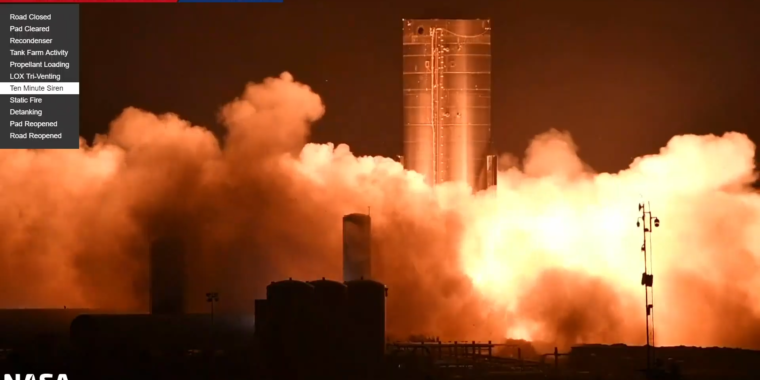
SpaceX engineers achieved another milestone early Tuesday morning when the company's Starship vehicle roared to life for the first time with multiple Raptor engines.
At 3:13am local time in South Texas, a Starship prototype dubbed SN8, or Serial Number 8, fired three Raptor engines for several seconds during a static fire test. Although there was no immediate confirmation from the company, the test at the company's Boca Chica launch site appeared to be successful.
This was an important step toward preparing SN8 for a 15km test flight later this month, or in early November. Even as one team prepared to ignite the rocket during the wee hours on Tuesday—which tested its plumbing to handle chilled liquid oxygen and methane fuels, and the recent installation of three Raptor engines—another team assembled the nose cone that will go on top of SN8 in preparation for its flight.
Development of the SN8 vehicle has proceeded relatively quickly. SpaceX built the core of SN8 this fall, and moved it from its factory-beneath-tents in South Texas to the nearby launch site in early October. Between October 6 and 8 it underwent three "proof tests" to ensure the integrity of its large, stainless steel fuel tanks. It then completed the static fire test—a moment of truth for any launch vehicle—early on Tuesday.
As part of the Starship program, SpaceX began experimenting with earlier prototypes in late 2019 and early 2020, losing three vehicles during various proof tests. In May, the company successfully tested a full-scale tank section of its Starship vehicle (SN4) for the first time with a single Raptor engine. It was later lost due to a ground-systems issue.
Then, in August, and again in September, it flew two different vehicles—SN5 and SN6—on short hops to 150 meters. These flying contraptions looked something like flying spray paint cans as they rose above the scrubby Texas coastal plain, but they provided valuable experience to the company's engineers, who learned to control the Raptor engine in flight and pushed the pressure limits on its fuel tanks.
Since then, work has proceeded on developing SN8 to make a far higher flight. For this, SpaceX needed to add large flaps to the tank section, and a nose cone. This vehicle more closely resembles what the final Starship vehicle will look like. It will ultimately have six Raptor engines. This will include three engines optimized for thrust at sea-level, and three more with larger nozzles optimized for thrust in the vacuum of space.
Ignition of SN5 on August 4, 2020. Trevor Mahlmann Starhopper looks on as SN5 lifts off for its 150m hop test. Trevor Mahlmann Roger, roger, SN5—we see you hovering clear five by. Trevor Mahlmann SN5. In flight. Over Texas. Trevor Mahlmann Turning to orient for landing. Read More – Source [contf] [contfnew] 
arstechnica
[contfnewc] [contfnewc]







